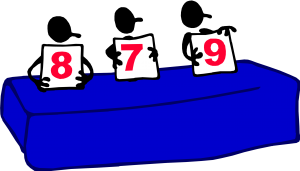 The ATAR (once-upon-a-time known as the ENTER) is formed by ‘aggregating’ ‘scaled’ ‘study scores’…(ASS’S – LOL!) and I hope the following will clarify this terminology….
The ATAR (once-upon-a-time known as the ENTER) is formed by ‘aggregating’ ‘scaled’ ‘study scores’…(ASS’S – LOL!) and I hope the following will clarify this terminology….
ATAR
Australian Tertiary Admission Rank.
- As the name indicates, an ATAR is for admission into Tertiary Institutions (University/TAFE).
- The ATAR is NOT a score out of 100, it shows a student’s achievement in relation to other students (in the same year)
- An ATAR can be used by its self or in conjunction with a range of criteria and requirements for entry to Uni.
- Universities may select the appropriate students for their courses based on their ATAR and other requirements.
If you achieve an ATAR score of 66.25 this means that you are in the top 34% of Year 12 VCE students in Victoria - in that year.
Grasping the Jargon
To understand how your ATAR is calculated you need to understand the following:
- Study Scores
- Scaling
- Aggregate
I will try and explain this as simply as possible….
Study Scores
You will receive a ‘Study Score‘ (max of 50) for each of your Year 12 (Unit 3/4) subjects.
Study Scores are calculated from the results of your SACS/SATS & Exams.
Even though your ‘in-school’ tests (SACS & SATS) are scored, you are only told your results in a variety of ways: ‘numerically’, ‘high’, ‘medium’, or ‘low’.
Why?
- Your SAC results may be ‘moderated’ depending on your exam results. (If you do well in your exam – your SAC results may be adjusted up, conversely, if you don’t do well in your exam, your SAC results could be lowered.)
- This is only one of the many checks and balances in place to ensure the integrity of the system. You can’t (or shouldn’t) be told your SAC results during the year because they may change after your exam.
 Scaling
Scaling
What is ‘Scaling’?
Each of your subject ‘Study Scores‘ is ‘scaled‘.
This is done, again, to measure or rank you against your peers from across the State/country.
The scaling process is a complicated mathematical procedure designed to recognise and distribute reward according to the varying degrees of difficulty between courses.
- When you consider that a mark of 30 in Maths Methods might be particularly harder to get than a mark of 30 in Literature you can begin to understand why there is a scaling process.
- The scaling process will raise or lower the original mark (Study Score) to make the ranked score ‘equitable’ (or fair) across all subjects.
The PDFs below will show you how subjects are scaled.
 Aggregate
Aggregate
What does ‘Aggregating’ do to your score?
Aggregating happens to your ‘scaled‘ scores.
By adding the scaled scores from your:
- English +
- next best 3 subjects +
- 10% of the 5th Subject +
- 10% of the 6th subject
this gives you your Aggregate score.
A magical mathematical formula is then applied to your Aggregate score – the result is called your ATAR – again, this shows achievement in relation to other students – it is NOT a score out of 100.
The following Aggregate/ATAR report will help you change an Aggregate score into an ATAR Score.
Calculation of your ATAR
 To get an idea of what your ATAR may be…. Here is a calculator you can try:
To get an idea of what your ATAR may be…. Here is a calculator you can try:
AtarCalc (Opens in new window)
Remember:
- the AtarCalc is a toy – results will only give you a ball-park figure!
- The average Study Score is 30.
- You are ranked against ALL students from across the ENTIRE State/Country, not just your school!
Publications / Links
VTAC produce a couple of publications for further research on scaling etc. You can download the ‘ABC of Scaling‘ (all Year 12’s receive late in the year) or current Year 10s & 11s can download specific publications pertaining to them by clicking here.
VCAA – you may find some answers to curly questions here.
Busting ATAR myths…
This ‘tongue in cheek’ toon, discusses myths regarding the ATAR. These are the views of the author only!


